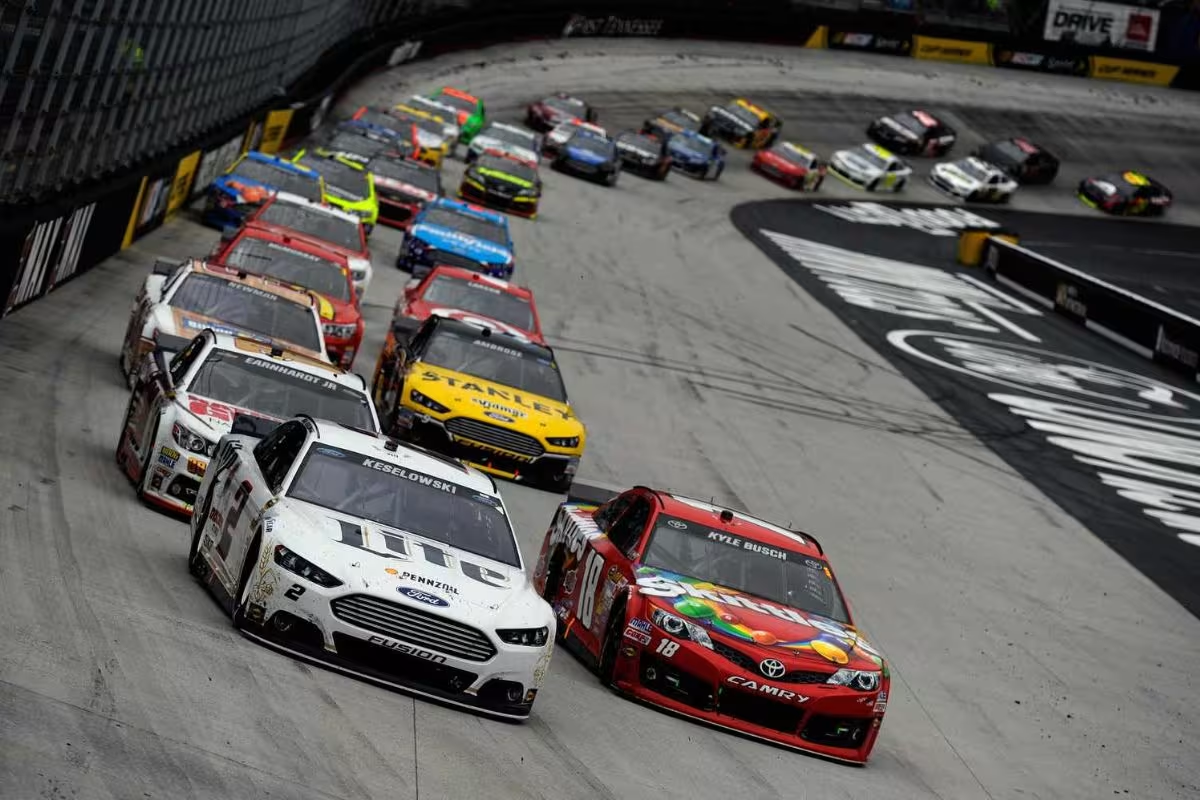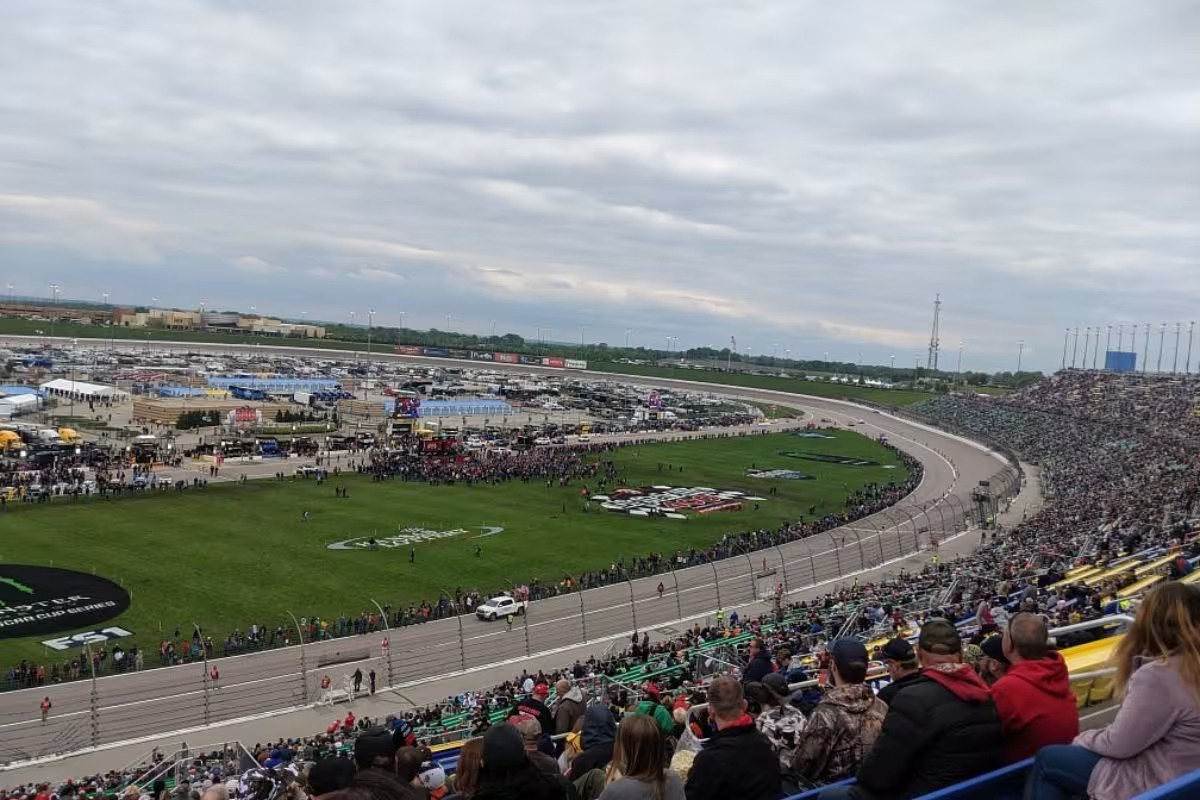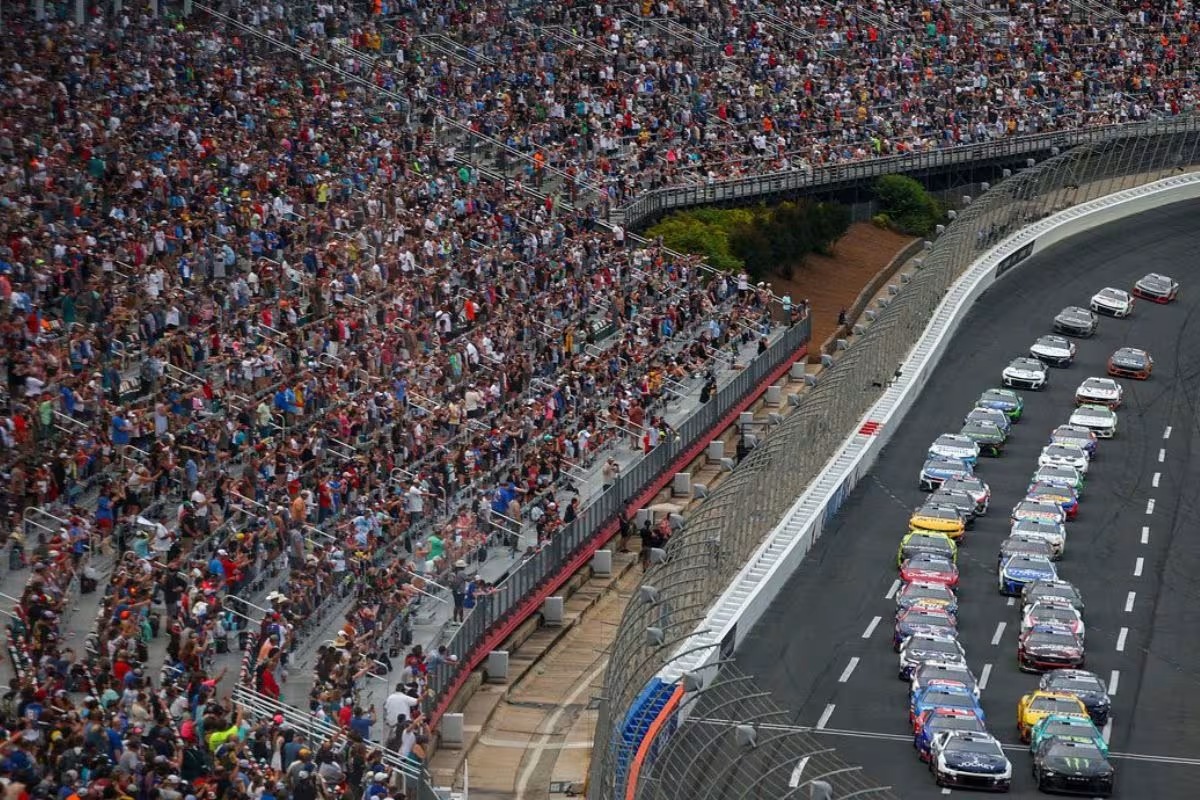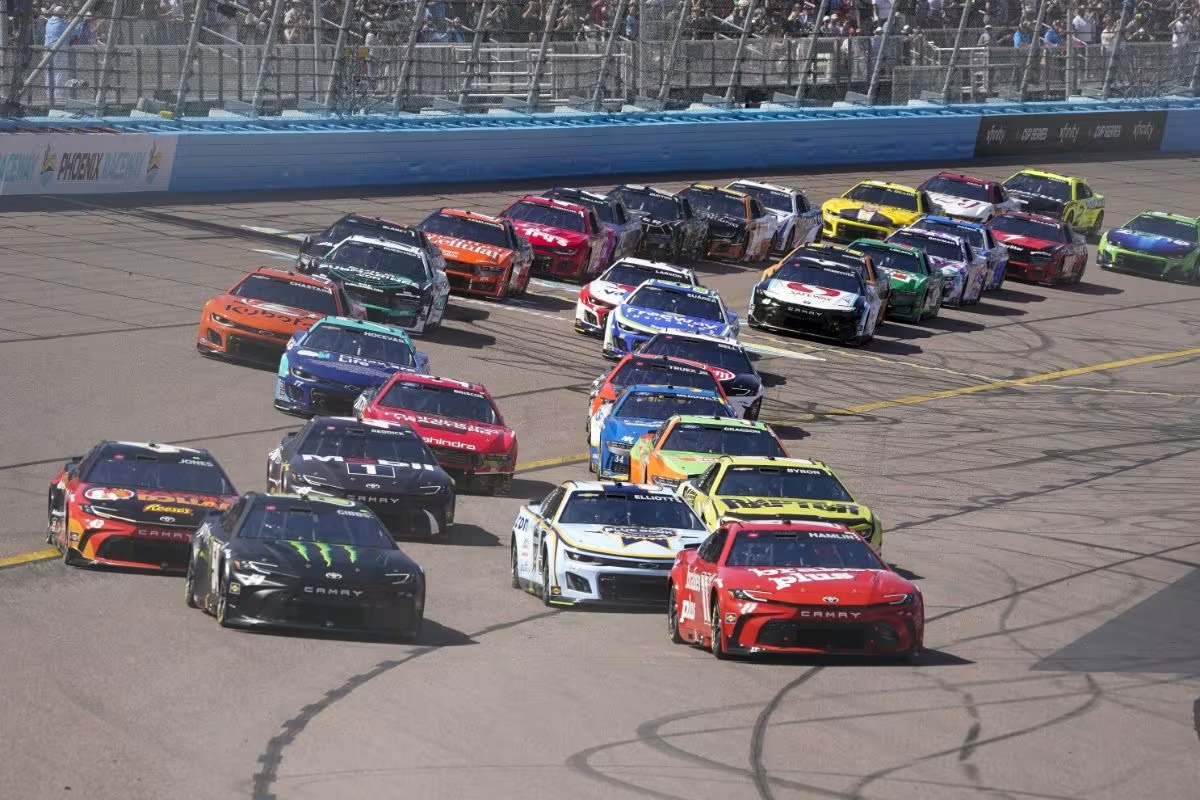NASCAR’s Short-Track Crisis: NASCAR is facing a critical short-track crisis, showed by Dale Earnhardt Jr.‘s call for bold dialogue among crew chiefs. The industry’s competitiveness is under examine, particularly following recent races that revealed a lack of overtaking and excitement. Economic viability of short tracks is threatened amid preferences shifting towards larger venues. Earnhardt Jr. stresses the importance of collaboration to create solutions that improve race dynamics and maintain fan engagement. As crew chiefs initiate conversations with fans to understand their sentiments, the implications of these discussions could shape the future of short-track racing in many ways. Further insights await.
Key Highlights
- Dale Earnhardt Jr. emphasizes the need for collaboration among crew chiefs to address competitive balance in short-track racing.
- Crew chiefs are actively engaging with fans to better understand their sentiments and improve the racing experience.
- Discussions focus on the Next-Gen car’s performance, highlighting challenges in maintaining competitiveness at short tracks.
- Regulatory adjustments are being considered to enhance racing excitement and encourage more overtaking during events.
- The preservation of short-track racing’s heritage is big for sustaining fan interest and the overall NASCAR ecosystem.
Community Reactions to Larson’s Win
The NASCAR community has been following Kyle Larson‘s recent success at Bristol Motor Speedway, revealing a complex reactions that go beyond the track’s surface.
While Larson’s skill as a driver is widely acknowledged, the discourse surrounding his win has largely centered on the broader implications for short-track racing. Many fans and analysts anticipated a compelling tire-wear race, suggestive of previous seasons, yet the reality unfolded into a lackluster event characterized by lengthy green flag runs and minimal overtaking.
This divergence in expectations has resulted in a reaction among the NASCAR faithful. Some view Larson’s achievement as symbolic of a growing problem in short-track racing, where the dynamics of competition seem to be diminishing. Critics argue that the current aerodynamic and tire management tactics have transformed what was once a fiercely competitive environment into a predictable and monotonous spectacle.
This sentiment has been echoed across diverse forums and social media platforms, prompting discussions on the necessity of regulatory adjustments to improve competition.
Conversely, a faction within the community defends the integrity of Larson’s victory, emphasizing his skill and the tactical intelligence required to navigate such conditions. They contend that the true essence of racing is to adapt and excel, regardless of the challenges presented by track configurations or tire degradation.
Larson’s win has ignited a critical conversation about the future of short-track racing in NASCAR, shedding light on the need for innovation to reignite the thrill that fans so deeply crave.
Crew Chiefs Engaging with Fans
Amid the ongoing discussions surrounding the implications of Kyle Larson’s victory, crew chiefs are increasingly taking initiative to engage directly with fans, fostering a dialogue that bridges the gap between the pits and the stands.
This trend exemplifies a shift in NASCAR’s communication approach, enabling crew chiefs to not only discuss race tactics but also to address fan concerns and suggestions in real-time.
Cliff Daniels, crew chief for Kyle Larson, was among the initial to open the floor for this dialogue via his X account, inviting fans to share their thoughts and experiences.
“NG7 platform is here to stay, and bear in mind it’s producing some of the best INT and SSW races the sport has had in a while. Some RC races also. ST races need help; we’re all on the same page. It can be done.”-(cliff daniels)
This interaction was met with enthusiasm, demonstrating the potential for crew chiefs to cultivate a community around their teams. Following Daniels, Chris Gabehart from the #11 team joined the conversation, further amplifying the engagement.
- Enhanced Understanding: Crew chiefs gain valuable insights into fan sentiments, leading to more informed decision-making.
- Building Loyalty: Engaging directly with fans fosters loyalty, as supporters feel their voices are heard and valued.
- Real-Time Feedback: Immediate fan reactions can guide tactical adjustments, creating a more responsive racing experience.
- Democratization of Dialogue: This open communication channel breaks down barriers, allowing fans to feel like active participants in the sport.
As crew chiefs adopt this new approach, the potential for enriching the NASCAR experience and enhancing the sport’s connection with its audience grows considerably.
“Pretty fun reading the dialogue on here from some crew chiefs in the business. Agree or disagree, it’s nice to hear their opinions because they are the smartest people in the room.”–(dale jr.)
Pretty fun reading the dialogue on here from some crew chiefs in the business. Agree or disagree, it's nice to hear their opinions because they are the smartest people in the room.
— Dale Earnhardt Jr. (@DaleJr) September 27, 2024
Dale Earnhardt Jr.’s Insights
Dale Earnhardt Jr. offers significant insights into the challenges facing NASCAR‘s short-track racing, particularly in view of recent performances that highlight the limitations of the current car package. The recent dominance exhibited by the #5 team, which led an impressive 462 of 500 laps at Bristol, serves as a microcosm of the broader issues plaguing short-track events.
“The highest level of short track racing in the US is directly connected and always influencing the success of grassroots short track racing in the US.”-(dale jr.)
While such performances emphasize team strength, they simultaneously reveal a troubling lack of competitive balance attributed to the Next-Gen car. Earnhardt Jr. emphasizes that NASCAR’s refusal to evaluate adjustments, particularly in horsepower, places undue stress on tire supplier Goodyear to rectify the situation.
Despite the promise of the Next-Gen platform, which has delivered compelling intermediate and superspeedway races, the short-track package appears sorely deficient. The inability to engage fans with thrilling, unpredictable racing at these venues risks alienating grassroots-level racing, which is fundamental to the sport’s ecosystem.
Furthermore, Cliff Daniels’ acknowledgment of the need for improvement in short-track races echoes Earnhardt Jr.’s sentiments. The collective recognition from industry insiders indicates an urgent necessity to address these shortcomings.
As Earnhardt Jr. articulates, a collaborative effort is imperative to revitalize short-track racing, ensuring it remains a cornerstone of the NASCAR experience. The dialogue initiated by crew chiefs and supported by veteran voices like Earnhardt Jr. is essential for fostering an environment ripe for innovation and enhancing the competitive fabric of the sport.
Concerns Over Short-Track Viability
Concerns are mounting over the viability of short-track racing within NASCAR, as industry experts voice apprehensions regarding its future. This dialogue has garnered attention from prominent figures in the sport, including Dale Earnhardt Jr., who appreciates the frank discussions among crew chiefs. However, the underlying issues remain essential and warrant thorough examination.
Key factors contributing to the concerns include:
- Economic Sustainability: The financial model supporting short-track events often struggles to compete with larger venues, which can hinder investment and innovation at grassroots levels.
- Fan Engagement: The connection between high-level short-track racing and grassroots participation is significant; a decline in visibility can reduce fan interest and attendance.
- Competition Dynamics: Differing opinions among crew chiefs, as noted by Chris Gabehart and Ryan Bergenty, highlight the complexity of maintaining competitive balance in short-track events.
- Influence of Technology: The increasing reliance on advanced technology in racing may overshadow the traditional aspects of short-track racing, potentially alienating a core segment of the fan base.
Dale Jr. emphasizes the intrinsic link between elite short-track racing and the broader ecosystem, suggesting that the health of one directly influences the other.
As these discussions unfold, it is imperative for investor to navigate these challenges thoughtfully. The future of short-track racing in NASCAR is not merely a matter of tradition but an essential component of the sport’s overall significance and sustainability.
“I do not see short-track racing surviving this if they don’t find some solution. And it’s not out of the question to think that in just a few years, the Martinsville’s and Bristol’s are going to be really hanging on.”-(dale jr.)
"I do not see short track racing surviving this if they don't find some solution." 😢 pic.twitter.com/89uyJo6RiK
— Dirty Mo Media (@DirtyMoMedia) September 25, 2024
Future of Short-Track Racing
How can NASCAR guarantee the preservation and relevance of short-track racing in an evolving landscape? As the organization navigates a shifting terrain dominated by superspeedways and road courses, the future of its historic short tracks hangs in the balance. Dale Earnhardt Jr.’s recent commentary shows a crucial crossroads without action, venues like Martinsville and Bristol may face diminishing returns, jeopardizing their storied legacies.
The short-track racing lies in its unique competitive dynamics—tight quarters, intense rivalries, and a atmosphere that has historically captivated fans. Yet, as the preference shifts towards 1.5-mile tracks where the Next-Gen car has thrived, the traditional short tracks risk losing their foothold. The decision to sacrifice Richmond Raceway for a international market exemplifies a broader trend that could marginalize these iconic venues further.
To safeguard the future of short-track racing, NASCAR must prioritize a balanced schedule that honors its roots while also embracing innovation. Possible solutions include teams to develop short-track specific setups, investing in fan engagement initiatives tailored to these races, and enhancing the entertainment value through tactical rule adjustments that promote closer racing and increased overtakes.
Moreover, the storied narratives and emotional connections associated with short-track racing could be fan interest. By elevating the profile of short tracks in marketing campaigns and ensuring their inclusion in the NASCAR narrative, the organization has a fighting chance to preserve the essence of what makes these venues essential to its heritage.
News in Brief: NASCAR’s Short-Track Crisis
The ongoing dialogue among crew chiefs reflects a approach to addressing the challenges facing short-track racing in NASCAR. The insights shared by Dale Earnhardt Jr. emphasize the necessity for inventive strategies to improve the sport’s viability. Community engagement and fan interactions serve as essential elements in revitalizing interest and support for short tracks. Ultimately, the future of short-track racing hinges on collaborative efforts that prioritize both competitive integrity and fan experience.
ALSO READ: Is NASCAR Short-Track Racing Dying? Insider Claims Fans Deserve Better!




